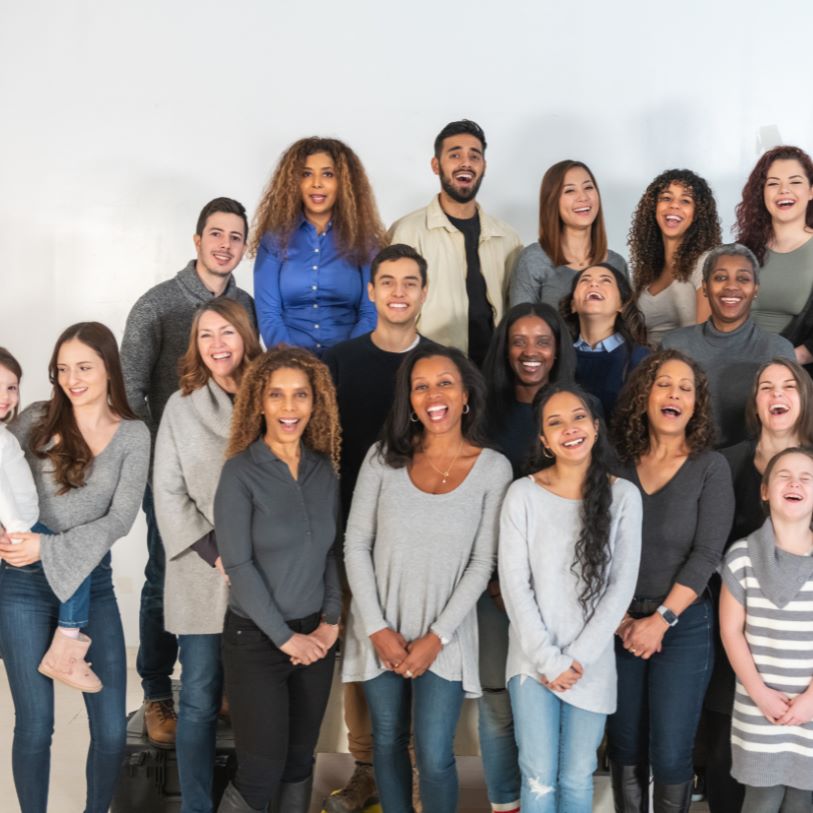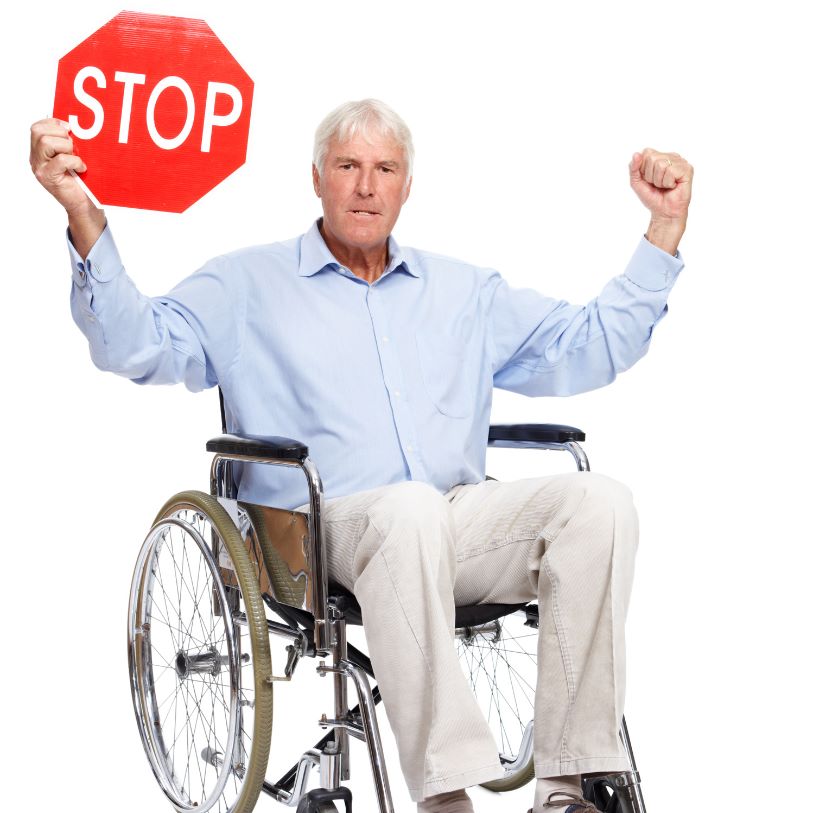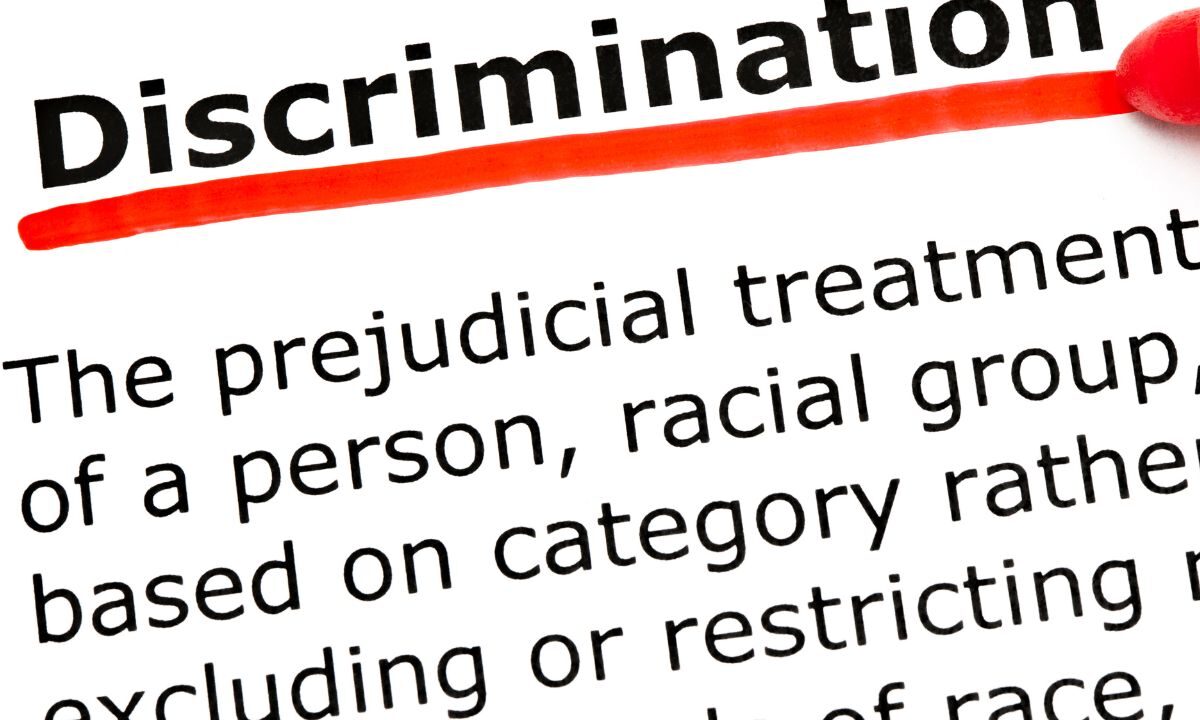Discrimination, the unjust treatment of individuals based on their social group is a pervasive issue that has plagued societies for centuries. While progress has been made to address this deeply ingrained problem, discrimination continues to manifest in various forms, affecting mental health, economic opportunities, and social equality. In this blog post, we’ll take a closer look at the different types of discrimination, their impact, and the strategies we can employ to combat this social ill and work toward a more inclusive and equitable world.
Table of contents
- Salient Insights: Essential Key Takeaways Unveiled
- Various Manifestations of Discrimination: An In-Depth Exploration
- Unmasking the Harsh Realities of Discrimination in the Workplace: A Definitive Guide
- The Devastating and Far-Reaching Impact of Discrimination Unveiled
- Advanced Tactics to Counteract Systemic Inequities and Unequal Treatments
- Summary
Salient Insights: Essential Key Takeaways Unveiled
Discrimination comes in many forms, from racial and ethnic to sexual orientation and religious.
Legal frameworks are essential for creating a fair society by protecting people from discrimination.
Education, community action & advocacy can help us challenge discrimination & create an equitable society where everyone has the chance to succeed.
Various Manifestations of Discrimination: An In-Depth Exploration

Discrimination can take many forms, from the obvious to the subtle, and it is rooted in prejudice, which stems from the need to identify with a certain group. It can manifest in racial and ethnic discrimination, gender discrimination, age discrimination, disability discrimination, sexual orientation discrimination, and religious discrimination.
Grasping the various forms of discrimination is a key step towards rectifying the issue and cultivating a society that is more inclusive and fair.
Exploring the Nuances of Racial and Ethnic Discrimination: An In-Depth Analysis
Racial and ethnic discrimination occurs when individuals are treated differently due to their real or perceived racial or ethnic differences. The belief that certain races are superior to others is a deeply ingrained notion that has caused significant harm throughout history, often manifesting as racial discrimination. A striking example of this is South Africa’s apartheid era, where racial segregation and discrimination were institutionalized. In modern times, racism often stems from the idea of biological differences between people, leading to social actions, practices, and beliefs that rank races as either superior or inferior. The Dalit community in India, for example, has faced gang rapes, killings, and the destruction of their homes due to their caste or birth identity.
Racial and ethnic discrimination not only affects the individuals who experience it directly, but also has a broader impact on society as a whole. It perpetuates stereotypes and exclusion, leading to social inequality and human rights violations. Counteracting such discrimination necessitates confronting the deeply rooted prejudices and biases that drive it, while fostering understanding, empathy, and, eventually, social change.
The Nuances of Gender-Based Discrimination
Gender discrimination involves treating individuals unfairly based on their sex or gender, often perpetuating stereotypes and gender roles. This type of discrimination can be found in various aspects of life, from education and employment to social and cultural norms. In some countries, women face discriminatory laws that limit their rights, such as restrictions on clothing in Saudi Arabia and Iran, or prohibitions on working at night in Madagascar.
Gender identity discrimination also exists, with transgender individuals facing belittling remarks or jokes in the workplace. Addressing gender discrimination involves debunking the stereotypes and gender roles that sustain it. By championing gender equality and empowering women and girls, we can build societies that are more inclusive, where everyone, regardless of their sex or gender, can flourish.
Confronting Gerontophobia: Unveiling the Unspoken Nuances of Age Discrimination
Age discrimination, or ageism, targets individuals solely based on their age, often affecting those in specific age groups more than others. This form of discrimination can lead to reduced employment opportunities, as older job seekers in the US have a more than 40% lower chance of getting an interview compared to young adults. Ageism also affects adolescents and children, perpetuating the notion that certain age groups are less capable or deserving of opportunities.
Combating age discrimination requires:
Challenging the stereotypes and biases that contribute to it
Promoting intergenerational understanding
Valuing the contributions of individuals at all stages of life
By doing so, we can build more inclusive societies where everyone has the opportunity to contribute and succeed, regardless of their age.
Confronting the Pervasive Stigma of Disability Discrimination

Disability discrimination, or ableism, results in the exclusion of disabled individuals from public and private spaces and services, as well as limiting their employment opportunities. Research has shown that disabled people require employment not only to make a living, but also to maintain their mental health and overall well-being. Legal protections, such as the Americans with Disabilities Act in the US and the Equality Act 2010 in the UK, ensure equal access to buildings and services for people with disabilities.
Countering disability discrimination involves:
Debunking the prejudices and biases contributing to it
Fostering understanding and empathy
Ensuring disabled individuals enjoy access to needed accommodations
By doing so, we can build societies that are more inclusive, where everyone has the chance to participate and succeed.
Combatting Sexual Orientation Discrimination: Empower, Educate, Advocate
Sexual orientation and national origin discrimination target minority groups, leading to prejudice and exclusion in various aspects of life, including employment. This form of discrimination is fueled by negative attitudes and biases, such as homophobia – an intense hatred towards people just because of their sexual orientation. In some countries, state-sponsored homophobia exists, where laws impose the death penalty for homosexual activity.
Workplace sexual harassment, a form of sex discrimination, includes unwelcome sexual advances or requests for sexual favors.
Countering sexual orientation discrimination demands confronting the negative attitudes and biases that drive it. By fostering understanding, empathy, and ensuring that individuals of all sexual orientations enjoy equal rights and opportunities, we can build societies that are more inclusive, where everyone can prosper.
Exposing the Hidden Crisis of Religious Discrimination: An Urgent Call to Action
Religious discrimination is based on an individual’s beliefs or feelings towards a religion, leading to social exclusion and, in some cases, persecution. This form of discrimination has been evident throughout history, such as the Nuremberg Laws of 1935 that separated those of Jewish faith as supposedly inferior to the Christian population. The Jewish population in Germany during the Nazi regime experienced horrific discrimination. They were forced to live in ghettos, made to wear an identifying star of David on their clothes and tragically sent to concentration and death camps in rural Germany and Poland. There, they were tortured and killed solely because of their religious beliefs.
Countering religious discrimination necessitates promoting understanding, tolerance, and respect for all religious beliefs. By encouraging interfaith dialogue and cooperation, we can build societies that are more inclusive, where individuals of all beliefs can peacefully coexist without prejudice.
Unmasking the Harsh Realities of Discrimination in the Workplace: A Definitive Guide

Discrimination in the workplace can take many forms, including employment discrimination, harassment, and hostile work environments, all of which constitute discrimination and affect individuals’ opportunities and well-being. Indirect discrimination is another form that can impact employees in a less obvious manner.
By understanding the different types of workplace discrimination and their impacts, we can work to create more inclusive and equitable work environments where everyone has the opportunity to succeed.
Employment Discrimination
Employment discrimination involves unfair treatment in hiring, firing, and pay based on factors such as:
race
gender
age
disability
sexual orientation
religion
This type of direct discrimination can lead to unfair or prejudicial treatment, resulting in limited opportunities and unequal treatment for certain groups, lower wages, fewer benefits, and fewer chances for advancement.
Sexual solicitation, encompassing unwelcome advances or requests for sexual favors, is a form of workplace misconduct that infringes on subsection 7(3) of the Code. This can also include prejudicial treatment toward an individual based on their relationship or association with a victim of such harassment.
Addressing employment discrimination requires:
Legal protections and policies that ensure equal treatment and opportunities for all individuals, regardless of their social group
Challenging discriminatory practices
Promoting diversity and inclusion in the workplace
By implementing these measures, we can create a more equitable and just society.
Combatting Harassment and Conquering Hostile Work Environments
Harassment and hostile work environments involve unwelcome comments or actions that create a toxic atmosphere, infringing on individuals’ rights and well-being. This type of discrimination can take many forms, including sexual harassment, which involves a course of conduct or a pattern of behavior that is unwelcome and offensive. Marginalized women, such as those who are racialized, have a sexual orientation, or are disabled, are particularly vulnerable to sexual harassment in the workplace.
To address harassment and hostile work environments, it is essential to create policies and procedures that foster a culture of respect, inclusion, and zero tolerance for discriminatory behavior. By providing training, resources, and support for individuals experiencing harassment, we can create safer and more inclusive workplaces.
Legal Protections and Rights
Legal protections and rights aim to prevent and address workplace inequality, ensuring equal opportunities and fair treatment for all individuals. Civil rights laws, federal anti-discrimination laws, such as Title VII of the Civil Rights Act of 1964, and state laws provide legal protections for victims of discrimination. These laws protect people from discrimination based on:
race
gender
age
disability
sexual orientation
religion
And provide remedies if someone has been discriminated against or her human rights have been violated.
By understanding and enforcing these legal protections and rights, we can create more inclusive workplaces where everyone has the opportunity to succeed, regardless of their social group. It is essential for employers, employees, and policymakers to work together to ensure that these protections are effectively implemented and upheld.
The Devastating and Far-Reaching Impact of Discrimination Unveiled

The impact of discrimination extends beyond the individual, affecting mental health, economic opportunities, and perpetuating social inequality.
By understanding the far-reaching effects of discrimination, we can work to address and prevent it, promoting a more inclusive and equitable society for all.
Mental Health Effects
Experiencing discrimination can lead to significant mental health issues, including stress, anxiety, and depression, sometimes even escalating to suicidal thoughts. Such prejudicial treatment can also undermine self-esteem and confidence, making individuals feel worthless. Physical symptoms such as headaches and fatigue can arise, impacting appetite, sleep, and activity levels.
Dealing with the mental health effects of discrimination requires providing support and resources to those affected, and fostering understanding and empathy within the wider community. By cultivating an environment of inclusion and respect, we can help alleviate the damaging effects of discrimination on mental health.
The Pervasive Ramifications of Discrimination: An In-Depth Exploration
Discrimination leads to job limitations, wage disparities, and restricted resources for marginalized communities. Discrimination can result in lower wages, fewer job opportunities, and limited access to resources, such as education and healthcare. Wage disparities between different groups can have a lasting effect on their economic stability and contribute to social inequality.
Handling the economic consequences of discrimination involves:
Promoting equal opportunities and fair treatment for everyone, irrespective of their social group
Lobbying for policy changes
Cultivating a culture of inclusion
Striving to close wage gaps
Ensuring that everyone has the chance to attain economic security and success.
Social Inequality
Social inequality perpetuates itself by reinforcing stereotypes, thereby fostering exclusion and unequal treatment based on social group affiliations. Consequently, discrimination limits access to power for certain groups, thereby perpetuating existing social inequalities. The ramifications of social inequality encompass mental health challenges, economic repercussions, and limited resource access, contributing to systemic disparities.
To combat social inequality, firstly confront stereotypes and biases, and secondly, advocate for equal opportunities across all social groups. By cultivating an environment of inclusion and respect, we can strive to build a more equitable and just society.
Advanced Tactics to Counteract Systemic Inequities and Unequal Treatments

Combating prejudice requires a multifaceted approach, including education and awareness, legal frameworks and policies, and community action and advocacy.
Using these methods, we can foster a society where inclusivity, equity, and opportunities for all, irrespective of social group, flourish.
Education and Awareness
Education and awareness are crucial in challenging stereotypes, biases, and prejudices that contribute to discrimination, promoting understanding and empathy. Educational programs like workshops and seminars equip individuals with the tools to identify and combat stereotypes, biases, and prejudices.
Through self-education and increasing our awareness, we can enhance our understanding and empathy for others’ experiences. A focus on education and awareness can foster a culture that challenges discrimination at its roots through understanding and empathy.
As communities and individuals, we can cultivate a society where all have an equal opportunity to thrive, regardless of background.
Legal Frameworks and Policies
Laws and policies guard against discrimination, promoting equality and opportunity for everyone, irrespective of social affiliations. Civil rights laws serve as shields against bias based on race, gender, age, etc., offering recourse for those affected.
Enforcing legal protections fosters inclusive environments, enabling success for all, irrespective of social group affiliation. Employers, employees, and policymakers must collaborate to ensure these protections are effectively put into practice and upheld.
In case you need support, elevate your voice against discrimination with the skilled legal minds of VUP Legal Consultants by your side. Our team members are not just attorneys; they’re dedicated advocates who specialize in tackling complex discrimination matters. Whether you’re facing workplace bias, unequal treatment, or any form of prejudice, our experts bring their expertise to champion your rights and work towards justice. Let us be your allies in the fight against discrimination.
Community Action and Advocacy
Community activism is crucial for awareness, supporting affected individuals, and advocating for policies that prevent discrimination. Some examples of community action include:
Organizing protests, rallies, and marches
Creating petitions and campaigns
Lending a hand to marginalized groups
Pushing for policy changes
Grassroots activism, awareness-raising, policy lobbying, resource allocation for marginalized communities, and systemic reform are key elements in this endeavor.
By engaging in community action and advocacy, we can create positive change and address social issues at their roots. By empowering and supporting marginalized communities, we can collectively foster a more inclusive and just society for everyone.
Summary
In conclusion, the issue of unequal treatment is both complex and widespread, necessitating a multifaceted approach for prevention and resolution. Understanding various types of discrimination and their effects can guide us in crafting strategies for a more inclusive, equitable world. Individually or together, we’re accountable for tackling this issue, fostering empathy, and championing rights for all.

What are 3 examples of discrimination?
Discrimination manifests in various ways, including bias based on age, disability, sexual orientation, religion, national origin, and pregnancy.
For instance, a person could face restaurant entry denial due to disability or earn less than an opposite-sex colleague. Additionally, unwelcome sexual advances from managers or colleagues can also constitute discrimination.
What are the 4 different forms of discrimination?
In essence, we should recognize four primary forms of inequality: direct and indirect bias, along with harassment and victimization.
What counts as discrimination?
Unfair treatment based on factors like race, age, or sexual orientation is termed discrimination, affecting both individuals and groups.
It often occurs when an employer treats an employee or applicant less favorably due to one of these characteristics.
How does discrimination impact mental health?
Discrimination can take an extreme toll on one’s mental health, causing stress, anxiety, depression, and even suicidal ideation.
Mental health struggles can exacerbate issues like substance abuse, social withdrawal, and daily life challenges.
It is important to recognize the signs of discrimination.
What are some strategies to combat discrimination?
Fighting discrimination requires education, legal safeguards for the impacted, and community advocacy for justice.
We should be open to examining our own preconceptions and acknowledging any advantages we might hold. Listening earnestly to those who’ve faced unequal treatment and valuing their experiences is also crucial. Furthermore, there is a need to advocate for legal reforms.
Share your experience in the comment section down below, your voice matters!

